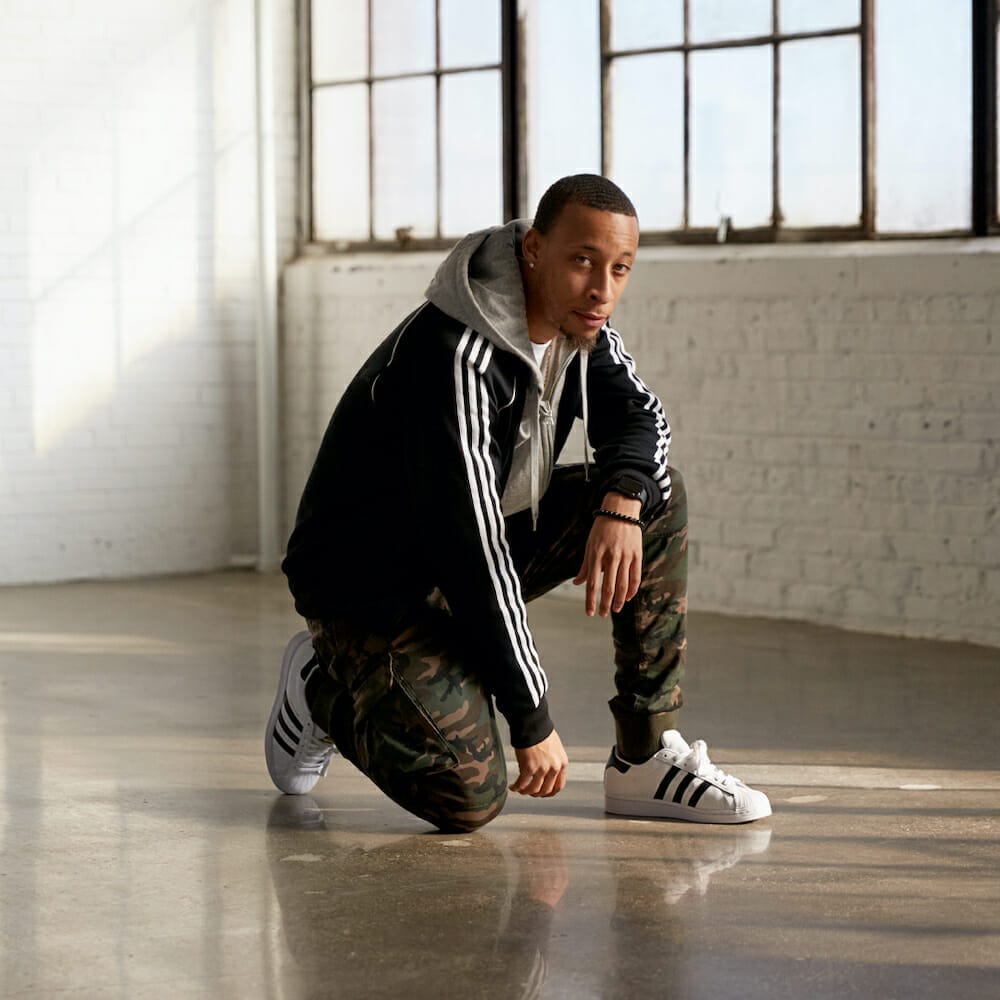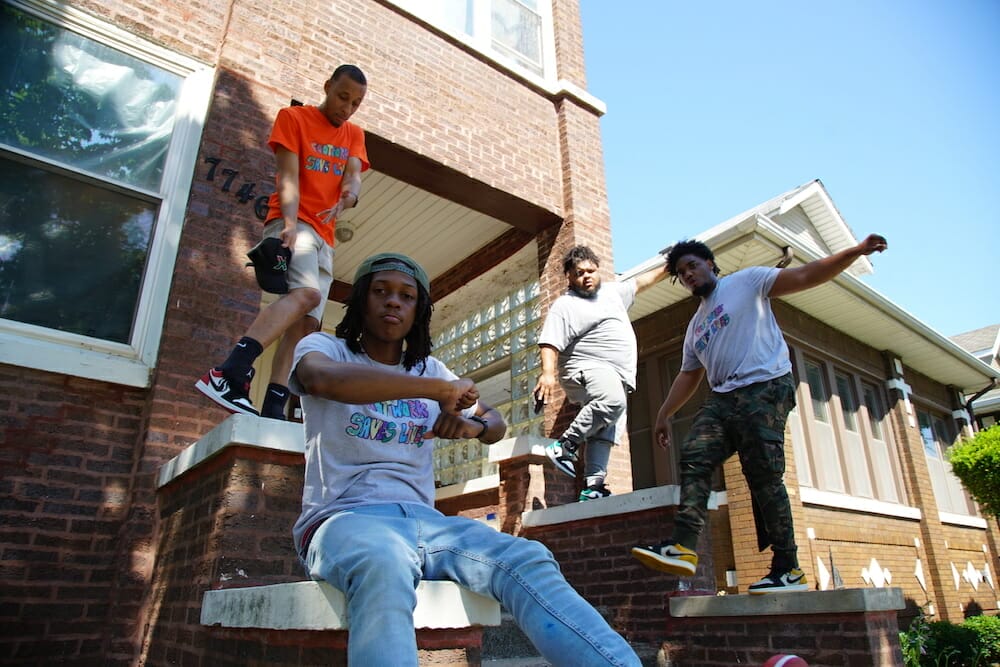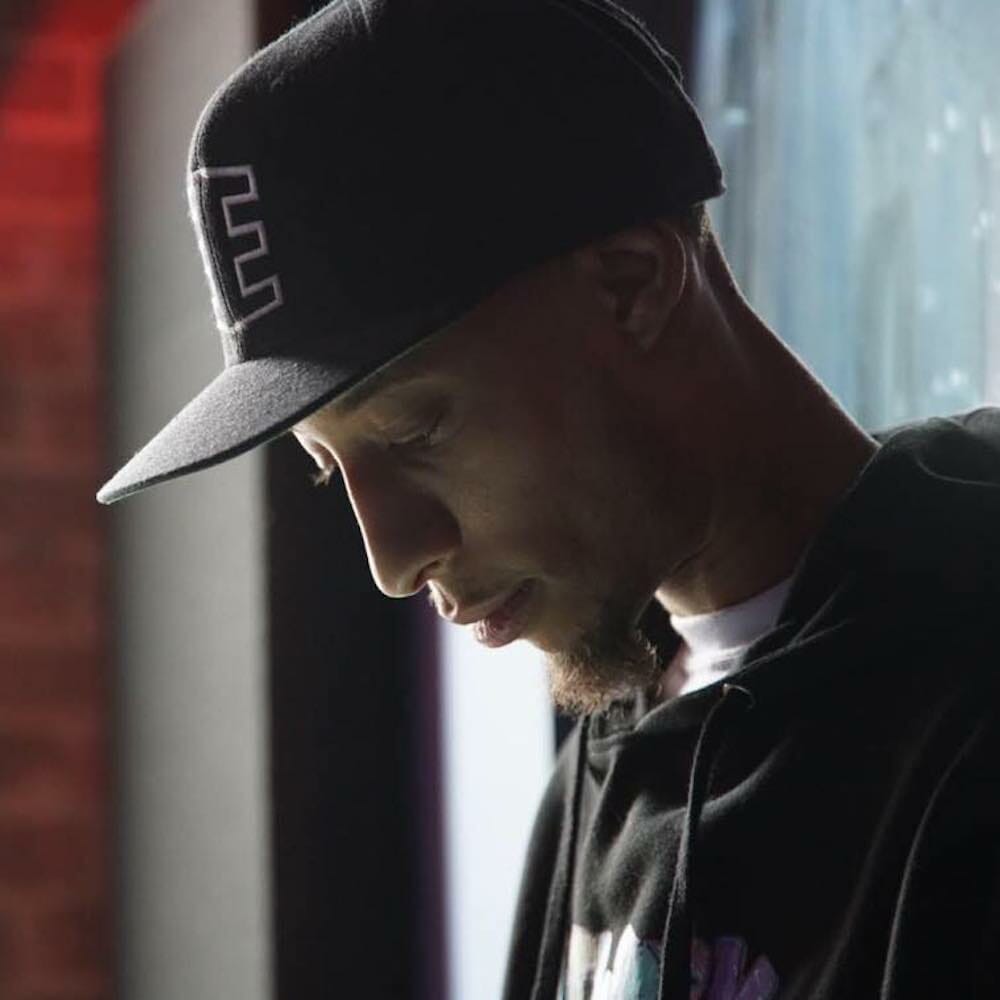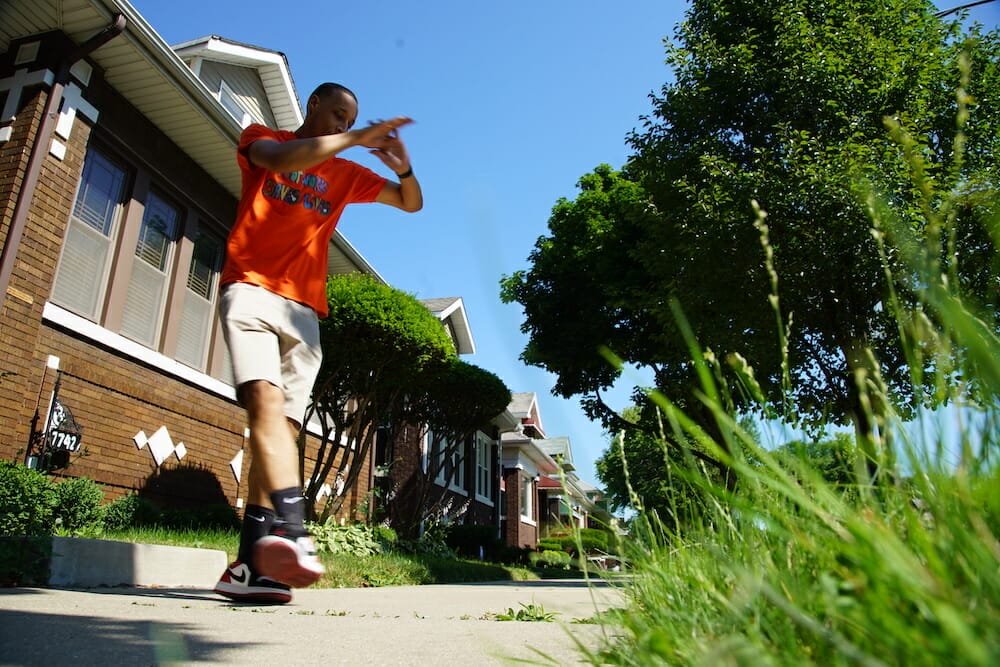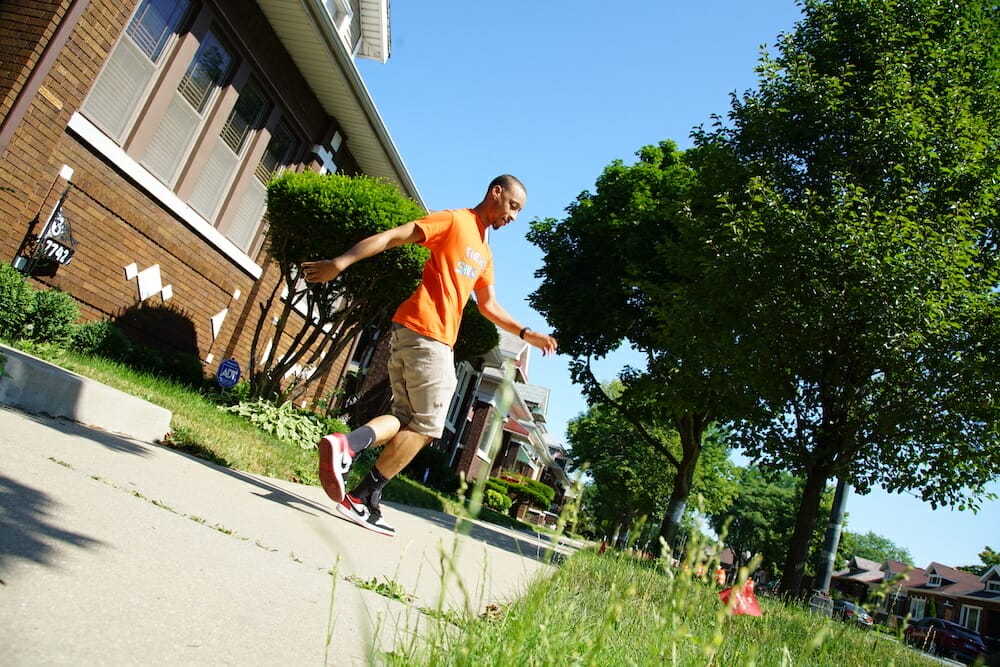Editor's Note: Read related interviews in the George Floyd: In Memorium roundup.
Picture This Post (PTP) speaks with The Era Footwork Crew’s Co-Founder, Jamal “Litebulb” Oliver (JO). Oliver has been a footwork dancer for about 15 years. In 2014, Jamal Oliver co-founded The Era Footwork Crew. Since then, The Era has partnered with Adidas and Nike, worked with artists like Theater Gates and Chance The Rapper, and performed at various music festivals. Recently, The Era received New England’s Foundation of the Arts’ National Dance Prize which helped them bring footwork to the stage for the first time. With Picture This Post, Oliver shares how he believes dance forms community and how this idea has influenced his work.
(PTP) Please tell Picture This Post readers about The Era Footwork Crew — its origins, members, and dance style.
(JO) In The Era, we have 6 members in total with different roles that help our collective function The Era features Artists Jamal Litebulb Oliver, Sterling Steelo Lofton, Brandon Chief Manny Calhoun, Jemal P-Top De La Cruz, and William Wills Glasspiegel and Mykia Tiny Miller. Our targeted audience varies from men, women, and children that range from ages 7 and up from all ethnic groups.
We started The Era Footwork Crew in March of 2014 in my apartment on 83rd and Ellis in Chicago. As teenagers, we all wanted to travel and perform together but over the years as we got older, I was the footwork dancer who was asked to come on tour to perform with DJ Rashad, DJ Spinn, and others as the music started to become more popular overseas. We started the group so that I could share the opportunities I was being awarded initially. Once we began pushing the movement, we noticed how much attention the music was gaining from around the world and how much the dance that helped forge the culture, was being overlooked. So our new mission became providing a voice for dancers, showing them how to transform what we grew up loving to do for fun into a grassroots business helping to propel a 30-year history of footwork across three generations of black dancers. Also, we want to expand the global scope of this history as footwork continues to develop and expand.
Chicago Footwork is a fast-paced, energetic dance-style that involves rhythmic motion focused around the legs and feet but also involves movement that mirrors the hands as well. The dance consists of basic fundamental movements that you put into combinations accompanied by glides, spins, and big moves that make up what we call rounds. The music is set at 160-beats per minute and created by dancers who are four fathers to the culture. The style means living life at 160-beats per minute to me as most Chicagoans do. Chicago Footwork means representing this city’s heartbeat to the fullest.
Chicago influences every bit of my work and dancing, keeping me grounded and provides me with the torch that I carry for my city’s true art form, footwork. It gives me a sense of well being knowing that I’m a descendant of such a rich history from a culture that’s been a part of everything, to some degree, in Chicago more or less. You can’t get more Chicago then footwork, hot dogs, deep-dish pizza, so we try to highlight aspects of Chicago that helped us reach the level of success we’re at today. Today we push the same message but now with a focus on ingratiating Chicago’s youth back into their cities’ rightful culture. For the past two years, we’ve made significant strides in bringing in over 100-200 new youth into footwork with my non-profit Open The Circle (O.T.C) I help co-executive direct with some of my closest colleagues/ friends.
Can you describe your work as a dance activist?
My work as a dance activist stems from me reconfiguring what being a dancer actually means, and changing the perspective of that. Too often, dancers of any genre are cast to the wayside by the larger industries or artists surrounding them which in turn puts a cap on what they can actually achieve in my eyes. Dancers are mainly given the role that plays support to larger performers, entities, and far too often viewed as just bodies and not artists themselves. I was able to work with my team using footwork as a tool to achieve new boundaries within the Footwork form, gaining national and international media attention from not only dance publications but music ones as well. Overall, we used every opportunity we gained to help highlight our image as more than background dancers or bodies but rather as dance artists who excelled in multiple lanes including, music, art, education, and dance as well.
Dancing to me means being able to express yourself through physical movement when words just aren’t enough — an unspoken language to many but also a vessel of expression when the world doesn’t always permit or accept one’s self-expression.
How has The Era expanded beyond just being a dance crew?
Since 2014, we’ve been expanding upon what it means to be a dance crew, releasing various music projects over the years addressing inequality and racism through lyrics and panel discussions. We also had a key focus on supporting women and girls in the history of footwork through collaboration and documentation. We just try to keep our work as authentic as possible, so that our work reflects the reality happening around us and issues most choose not to address. Institutions like the Field Foundation, the University of Chicago, the Joyce Foundation, and NEFA (New England Foundation For The Arts) have recognized The Era with grants in support of the group's boundary-breaking artistic and social leadership. You can see our work being highlighted or models of our work being used in short documentaries by VICE, CBC (Canadian Broadcast Company), and the Chicago Tribune, and the list goes on. Again, this is just our way of showcasing dancers being more than just “dancers” or a part of a “dance crew” but being leaders in their form that allows them to excel in other lanes.
Can you tell our readers about The Era’s new piece, The Testament?
We’ve been thinking about making a visual to our song since we recorded it back in 2016 for our first music project but let the idea stay dormant until the right time revealed itself, then boom! the world turns upside down and here comes Physical Festival with an opportunity to make up for the rescheduling of their festival due to COVID-19. We began talks with the Physical Festival over this past month about possibilities and the idea formulated naturally, after that we just got to work.
Throughout this piece, immediately you’ll be able to see how we provide a platform for women inside a male-dominated culture and how women hold their own weight and do it well within our culture. We use our own music and lyrics which speaks to us being a voice for dancers, and not just bodies apart of something larger but artists that demand respect just like any other industry. I feel like one main disparity is that with a piece such as this, you can see how dancers from the streets are just as important/valuable as any other dance or dancers on stage.
In the past, The Era has toured public schools engaging the students with dance. Why do you think it is important to expose the power of dance to the youth?
It's pretty simple to me, show them another outlet for expression and a successful career instead of the usual, rapper, singer and sports lane. Showing them you can have just as many opportunities as dance artists like any other field if they push themselves with guidance from mentors that are or have been successful in the field of dance.
We’ve seen children from our own summer camps embody dance and use it as a tool to tell their own stories. Youth have started new dance crews and become full-on footwork battle dancers following in our footsteps and the footsteps of others. Within the footwork culture, youth are mobilizing due to our efforts to pass on the history and fundamentals through our camp in order to get them started on their own journey. Exposing youth to dance alongside instilling a “do it yourself” attitude gives them a sense of pride, confidence that they can do anything and alternative outlets that can be pursued. There aren’t too many leaders with a voice that dance within Chicago Footwork, but we feel like The Era represents that in totality and are grateful that we can be an example for them to follow as figures.
From your perspective, how have you seen the Black Lives Matter movement impact the dance world?
I’ve seen a significant increase in support for black artists to either create a new piece in response to what’s going on in the world or fellow artists working to help provide as many resources as they can to help black artist movements. I think it’s great too because if we’re going to use a time such as this to spread resources to a more than deserving community of artists who are far too often undercut and overlooked, then now is as good a time as any. To me it’s the best of both worlds, you have artists creating new content daily that’s helping the cause, and resources flowing in to help those artists in need. We just have to keep helping each stay aware of what’s out here as a community and continue the push from there.
In what ways, do you think The Era can help further the conversation regarding Black Lives Matter?
I feel like we have to continue creating pieces like The Testament that reflect the realities around us. Create non-stop, produce until you can’t anymore because too often we feel as dancers we don’t have a voice, and in times like these, it causes your voice to be utilized even more than normal. It may be uncomfortable but we must act and speak to what’s happening around so we can be counted on, and play our part in the history happening right in front of us.
How do you think dance can be used as an instrument against oppression?
Through dance, our voices and energy can be limitless which in turn forms community amongst one another. We know how oppression can divide us but in the face of negativity, dance brings positivity, awareness, and furthermore brings us closer together. Coming together through dance inspires that same community to work on strategies that best serve their needs and the needs of others that many forms of oppression negate. I think dance helps us all release feelings that may be pent up from past experiences or speak on issues that may be uncomfortable for many but most definitely need to be said for the greater good of humanity.
Nominate this for The Picture This Post BEST OF 2020???
Click Readers' Choice
Vote Securely! Vote Privately! And Make Your Vote Count-- as all voting should be!!
For more information, please visit The Era Footwork Crew Website.
Photos courtesy of Wills Glasspiegel of The Era.
Read more dance reviews by dancers in the Picture This Post Round-Up, “Choreographers’ Eyes - Dancers Explain Dance”. Watch this video preview of the story here — Find more Picture This Post dance reviews in the latest roundup — CHOREOGRAPHERS WE LOVE. Also, watch a short preview video here —

